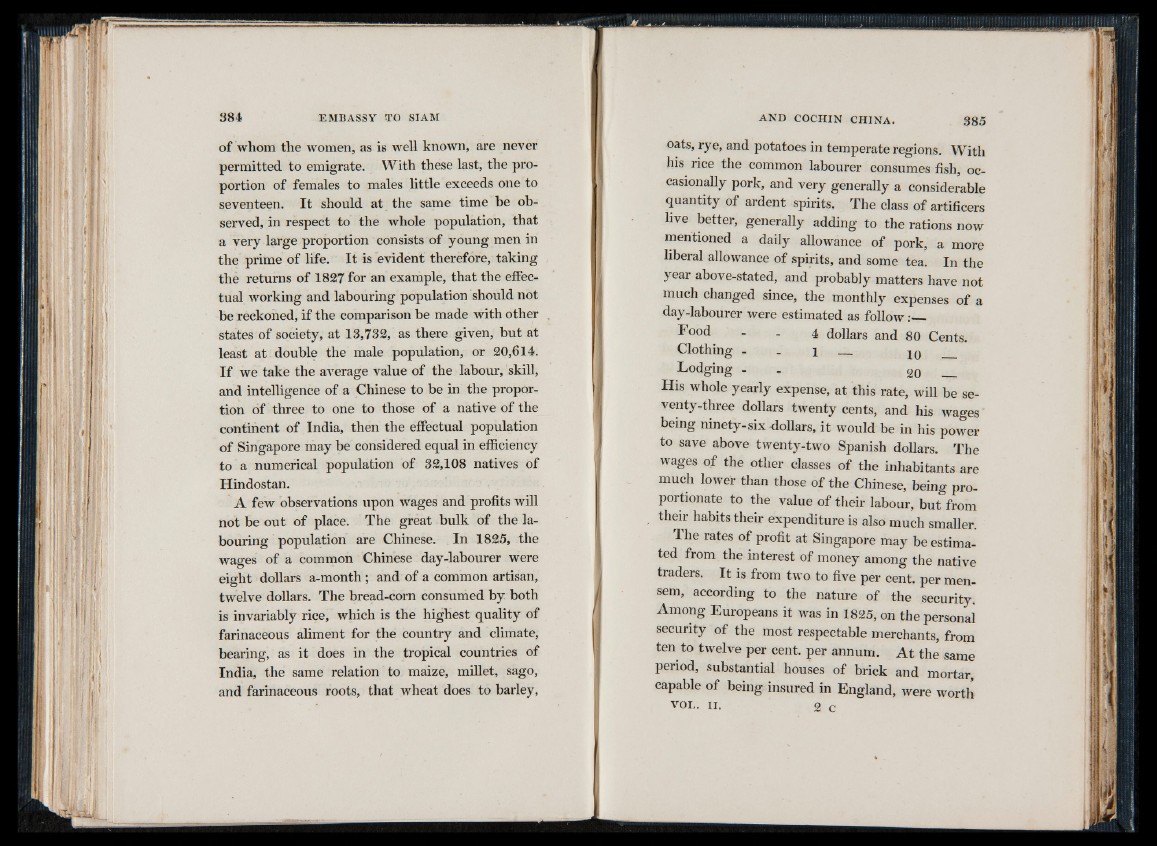
of whom the women, as is well known, are never
permitted to emigrate. With these last, the proportion
of females to males little exceeds one to
seventeen. I t should at the same time be observed,
in respect to the whole population, that
a very large proportion consists of young men in
the prime of life. I t is evident therefore, taking
the returns of 1827 for an example, that the effectual
working and labouring population should not
be reckoned, if the comparison be made with other
states of society, at 13,732, as there given, but at
least at double the male population, or 20,614.
I f we take the average value of the labour, skill,
and intelligence of a Chinese to be in the proportion
of three to one to those of a native of the
continent of India, then the effectual population
of Singapore may be considered equal in efficiency
to a numerical population of 32,108 natives of
Hindostán.
A few observations upon wages and profits will
not be out of place. The great bulk of the labouring
population are Chinese. In 1825, the
wages of a common Chinese day-labourer were
eight dollars a-month; and of a common artisan,
twelve dollars. The bread-corn consumed by both
is invariably rice, which is the highest quality of
farinaceous aliment for the country and climate,
bearing, as it does in the tropical countries of
India, the same relation to maize, millet, sago,
and farinaceous roots, that wheat does to barley,
oats, rye, and potatoes in temperate regions. With
his rice the common labourer consumes fish, occasionally
pork, and very generally a considerable
quantity of ardent spirits. The class of artificers
live better, generally adding to the rations now
mentioned a daily allowance of pork, a more
liberal allowance of spirits, and some tea. In the
year above-stated, and probably matters have not
much changed since, the monthly expenses of a
day-labourer were estimated as follow
Food 4 dollars and 80 Cents.
Clothing - - i jq
Lodging - 20 —
His whole yearly expense, at this rate, will be seventy
three dollars twenty cents, and his wages
being ninety-six-dollars, it would be in his power
to save above twenty-two Spanish dollars. The
wages of the other classes of the inhabitants are
much lower than those of the Chinese, being proportionate
to the value of their labour, but from
their habits their expenditure is also much smaller.
The rates of profit at Singapore may be estimated
from the interest of money among the native
traders. I t is from two to five per cent, per mensem,
according to the nature of the security.
Among Europeans it was in 1825, on the personal
security of the most respectable merchants, from
ten to twelve per cent, per annum. A t the same
period, substantial houses of brick and mortar,
capable of being insured in England, were worth
VOL. II. 2 c